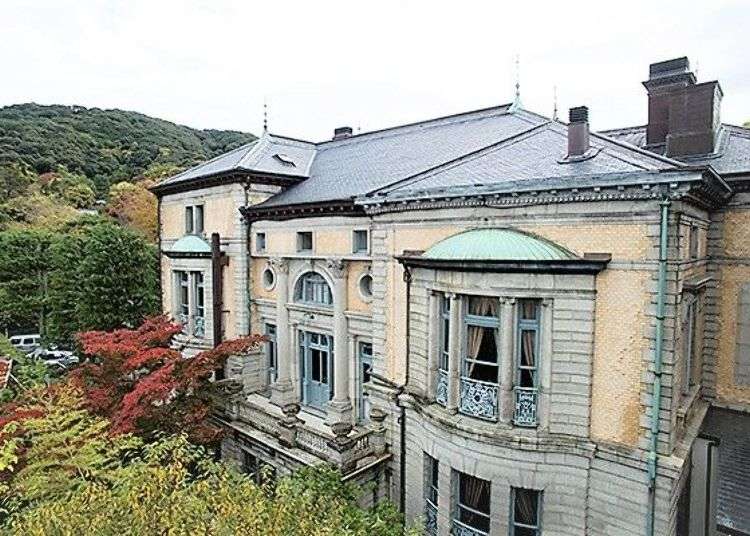
Built during the Meiji Era, Hotel Chorakukan is a historical building embodying several different European architectural styles. Even today you can experience firsthand the history of turn-of-the-century Japan in this hotel with a cafe and restaurant operating in the Gion district of Kyoto.
The Guest House of Kyoto remains vibrantly alive today
The Chorakukan was built as a separate residence by Kichibee Murai, the Meiji era tobacco king, in 1909 and gained prominence as the guest house of Kyoto.
In addition to being designated as the lodging for ambassadors of several countries who attended the Otairei (ceremony for the enthronement of the Emperor Taisho) in 1915, several prominent Meiji era statesmen such as the first Prime Minister Hirobumi Ito, Shigenobu Okuma, and Aritomo Yamagata also spent relaxing moments here.
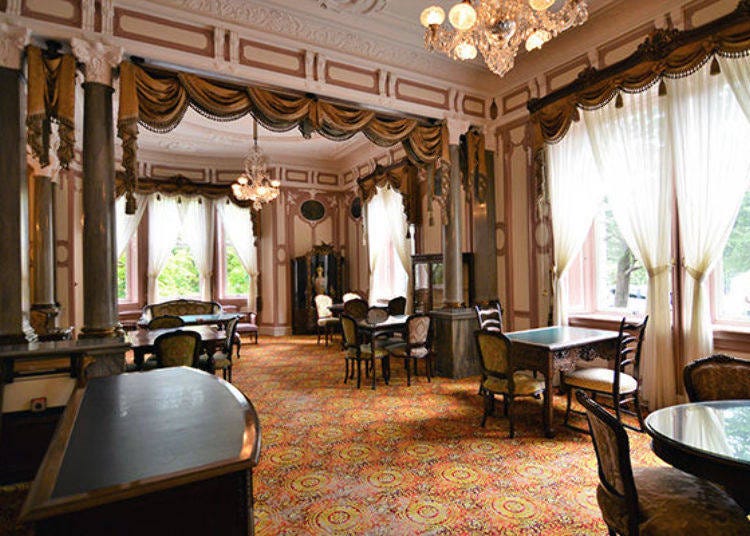
The entrepreneur Mr. Murai used his own resources to have the Chorakukan built in various Western architectural styles. At that time it rivaled the Rokumeikan in Tokyo in its opulence and was a place where honored guests from abroad and at home could pass the time. In recognition of its history of over 100 years and its cultural value, it was designated a Kyoto City Tangible Cultural Property in 1986.

Chorakukan is located at the east end of Kyoto Shijo-dori, close to Yasaka Shrine. If you go through the main shrine after entering from the front of the shrine, then after entering Maruyama Park turn right at the first corner and you will see the entrance of the Chorakukan.

View of the front of the Chorakukan. The imposing appearance of the brick and stone edifice still conveys the atmosphere of that time even to this day. The two columns supporting the roof of the entrance are in the Ionian style which is one of the architectural styles of ancient Greece. The columns are in a delicately feminine style.
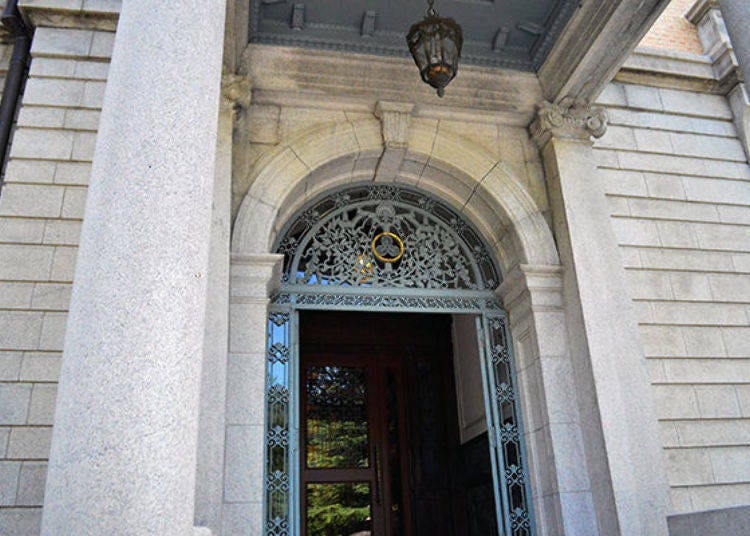
Ornamentation above the entrance. The family crest of the Murai Family, Mitsukashiwa [three oak leaves] is in encircled in gold near the center.

If you turn around after stepping into the entrance hall you can see the beautiful stained-glass window that basks the interior in soft light.

Going into the hall you are welcomed by an expanse of red carpet leading into the lobby. In this space it is as though time has stopped and you have been taken back 100 years in time.
Inside Hotel Chorakukan's New Wing
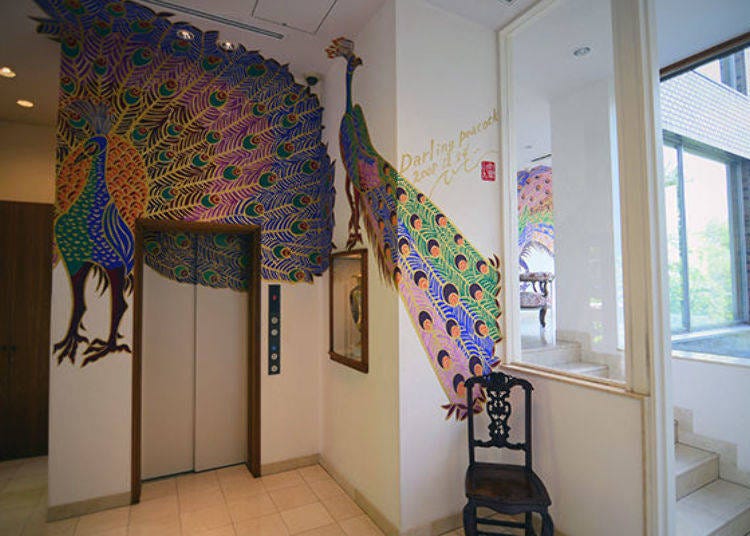
After passing through the softly lit lobby the first thing to do is check-in. Pass through the main building and head towards the Hotel Chorakukan. This is a new wing that was added in 2008 to the 100-year-old main building. There are three guest rooms each on the 3rd and 4th floors, six in total, offering the utmost in privacy.

The Panorama View Hollywood Twin Room, in which I stayed, is the largest and has the best view of the six guest rooms. From the room you are afforded an excellent view of Maruyama Park and the city center of Kyoto. The verdant greens in Maruyama Park and Higashiyama when I visited in the middle of August were very beautiful and a joy to look at leisurely.

The room is a spacious 53 square meters in size. There are two double beds (140 cm wide x 210 cm long) in this twin room.
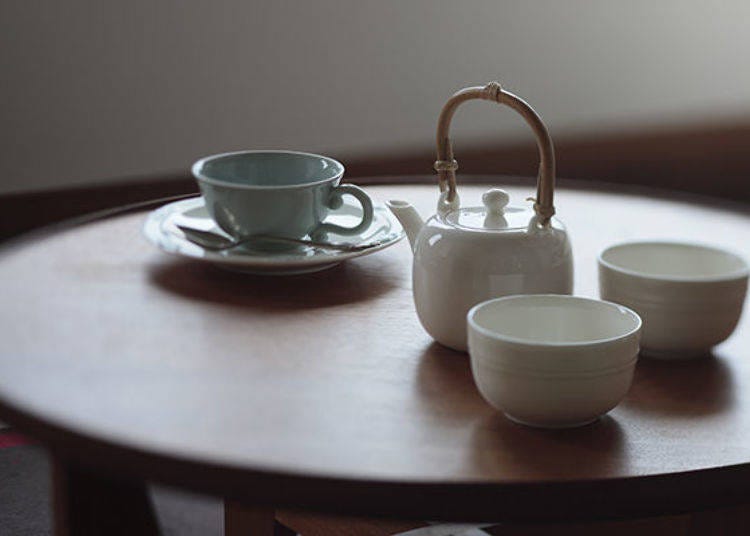
Attention to detail has been paid to the furnishings; the furniture, table and chairs are made of solid wood, and in addition to the Kyoto Kiyomizu ware tea set, there is also a rug woven by a famous Kyoto craftsman. The amenities are all organic products of Kyoto and thus add to the "feel" of Kyoto during your stay.
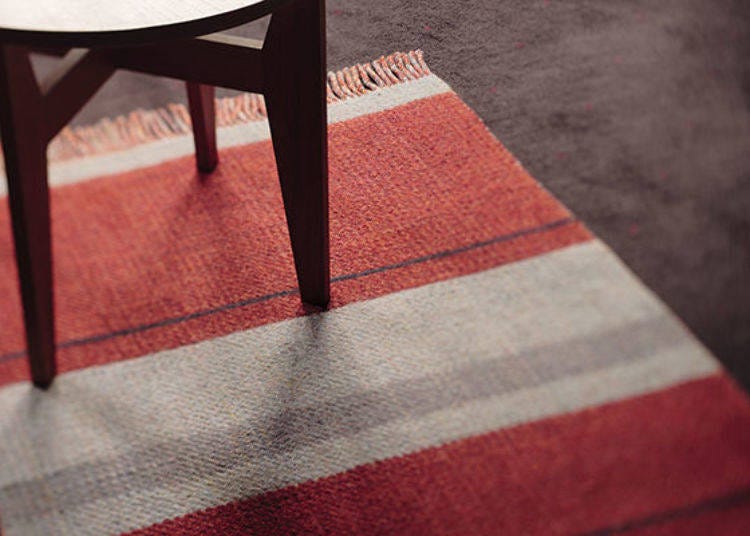
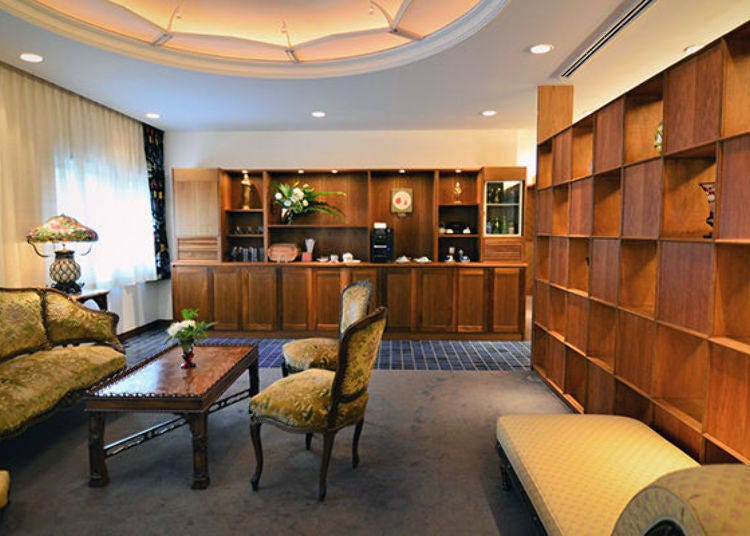
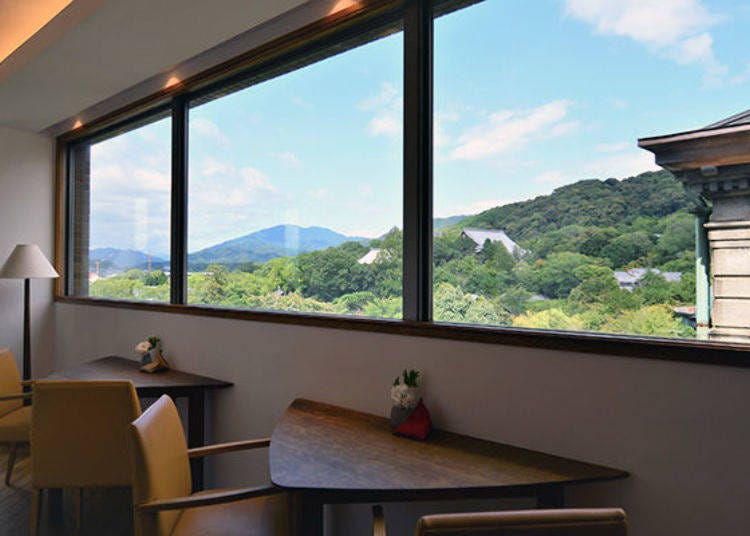

This is the view in the morning when you wake up. It really is quite stunning! I could also see the red torii gate of Heian Shrine. When the weather is fine you can see the northern part of the city and all the way to Kitayama in the distance. Though located in the center of Kyoto, the hustle and bustle of the city seems far away in this place that feels like a tranquil resort area.
During your stay here are places to see
You can feel the history and culture in all of the rooms in the main building, which is more than 100 years old. Here are some particularly impressive spots.
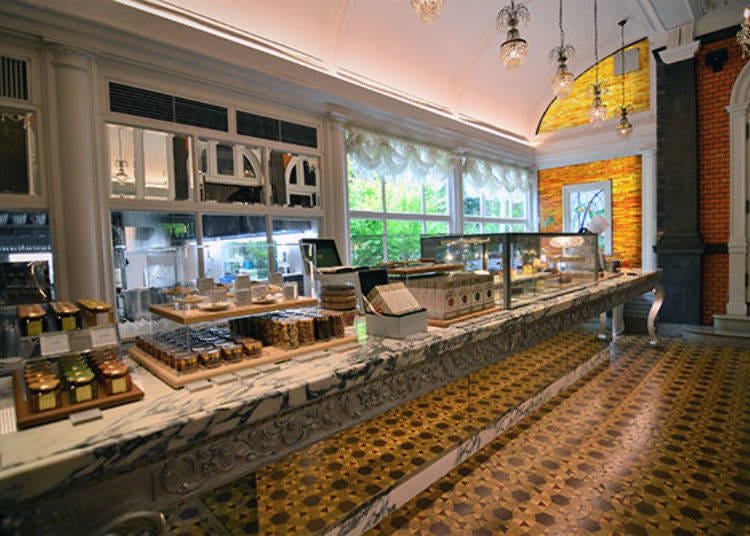
First let’s take a look at the Chorakukan Boutique. When the place was built this was originally a greenhouse and contained many decorative indoor plants. Today it sells cookies and baked pastries handmade by the patissier of Chorakukan.


Continuing on we come to the Guest Room directly off the entry hall. Built in the Rococo style, it was originally used as a drawing room. In Europe, drawing rooms were primarily used by ladies for entertaining one another and were places to where they withdrew after a meal in order to converse among themselves.
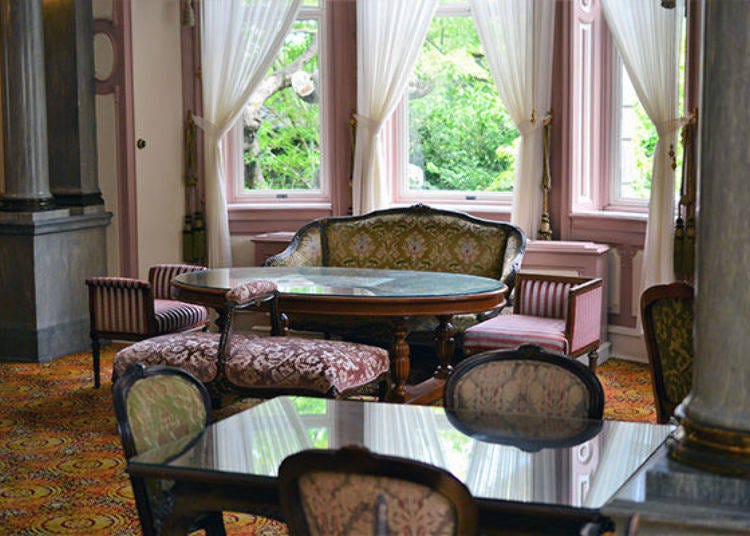
Some of the tables and chairs are original pieces that have been repaired. Sitting here one gets a sense of the room’s elegance.
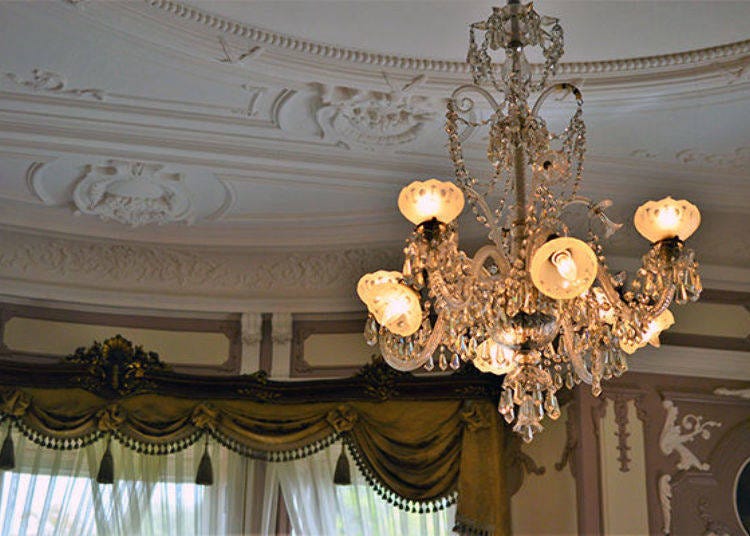
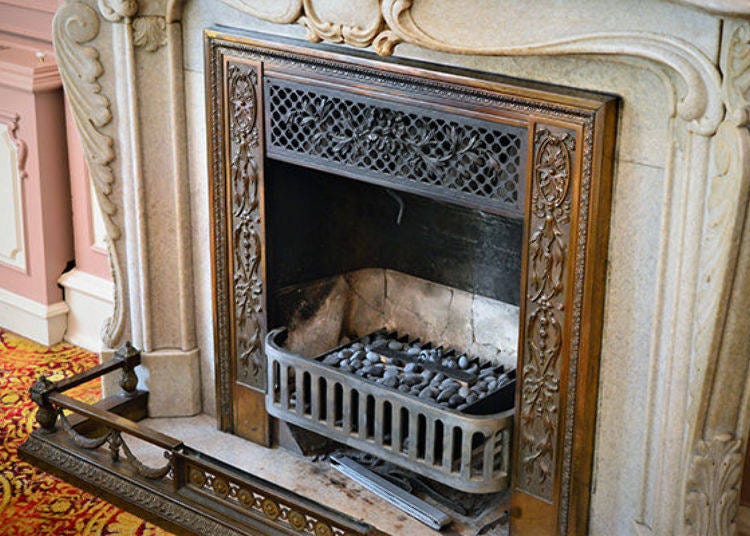
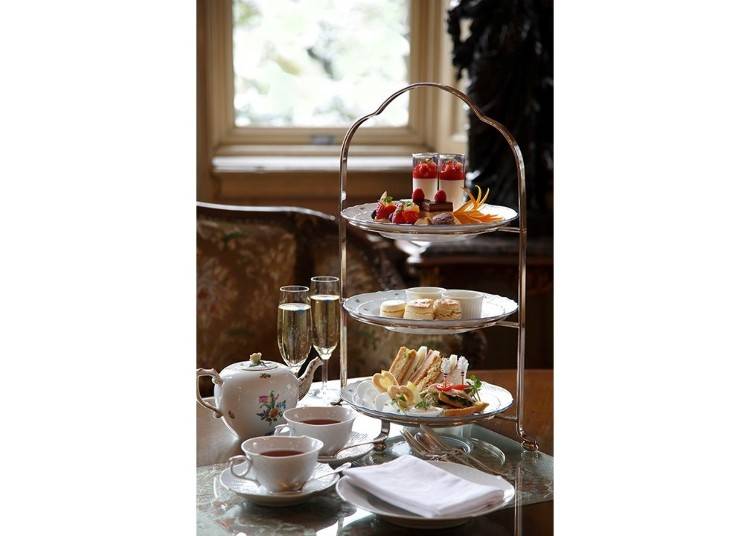
Today this room is exclusively used for afternoon tea. I highly recommend it for either before or after you check in or after you check out. You can spend an elegant afternoon here.
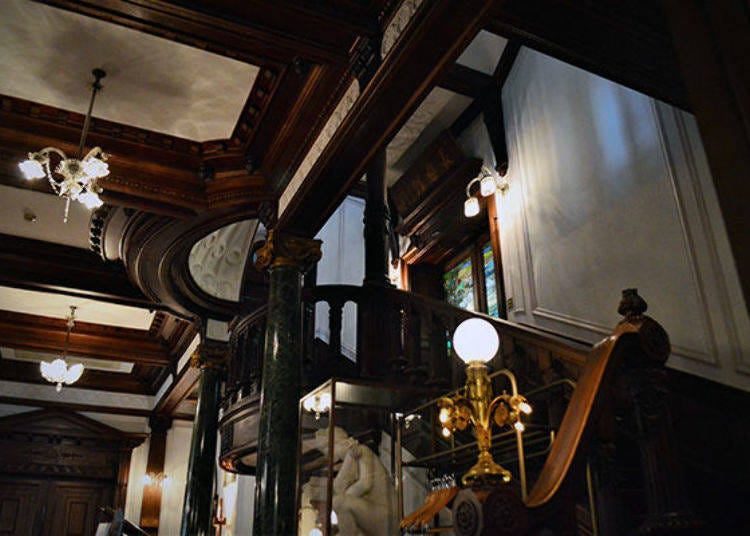
Last we will introduce the Chorakuan and Onari no Ma, two rooms that are not open to the public. Only guests staying at the hotel can view them. The architectural style on the 1st and 2nd floors is Western, but the rooms on the 3rd floor are purely Japanese in style. The stairway of the lobby leads up to the 3rd floor.
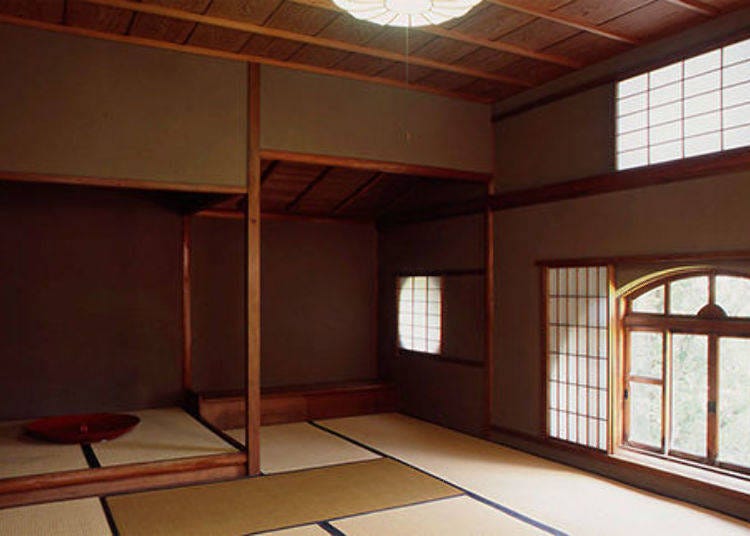
This is the Chorakuan tea room that was modeled after the Zangetsutei tea room in the Shoin style of the Omotesenke School. Although it is not shown in the photograph, there is a round stain glassed window which is unusual for a tea ceremony room.
![▲ The Onari no Ma. The Kato Mado [window] is in the rear left](https://rimage.gnst.jp/livejapan.com/public/article/detail/a/20/00/a2000021/img/en/a2000021_parts_5ce24bf430235.jpg?20200916083531&q=80)
The Onari no Ma is a Japanese room in the Shoin-zukuri [traditional residential architecture] style used for formal occasions. The three-oak-leaf Murai family crest adorns the ceiling, and the staggered shelves and Katomado indicate elevated social status. The ceiling is a folded coffered ceiling, and here, too, Baccarat chandeliers are used to create a splendid fusion of Japanese and Western tastes in this space.
The name of this room, Chorakuan, which literally translates as "long enjoyment hermitage", was given to it by Hirobumi Ito when he looked out the window of the Onari no Ma towards Higashiyama and remarked, "May the pleasure last for a long time." You can strongly feel a page of history in this precious room. Please be certain to look at this room when you stay at the hotel.
Enjoy a gourmet meal in the elegant restaurant
One of the highlights of a stay at Hotel Chorakukan is the cuisine offered in its restaurants. There are two: Le Chene, which offers authentic French cuisine, and the more casual Italian restaurant Coral. I selected Le Chene in the main building.

Le Chene, on the first floor of the main building, is where the dining room originally was. The dining room is truly gorgeous in its English Victorian era neoclassic design. It evokes an image of English aristocracy.
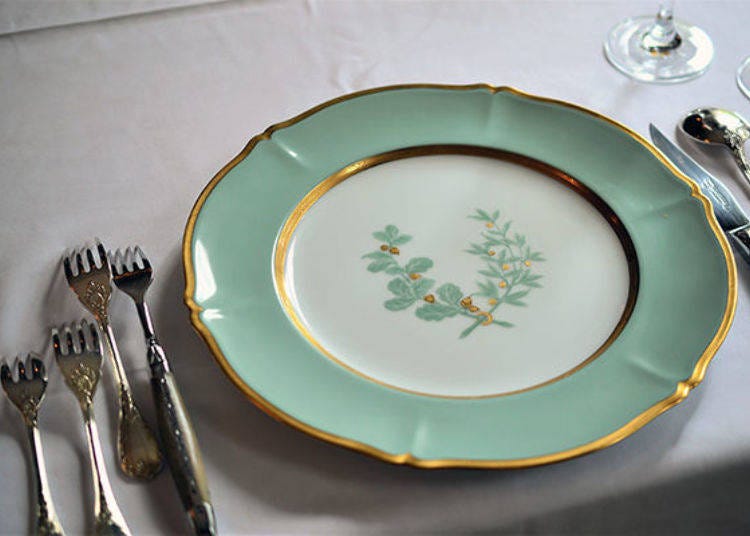

The large chandelier hanging from the ceiling is also by Baccarat. It brightens the room with its solid, gorgeous light.
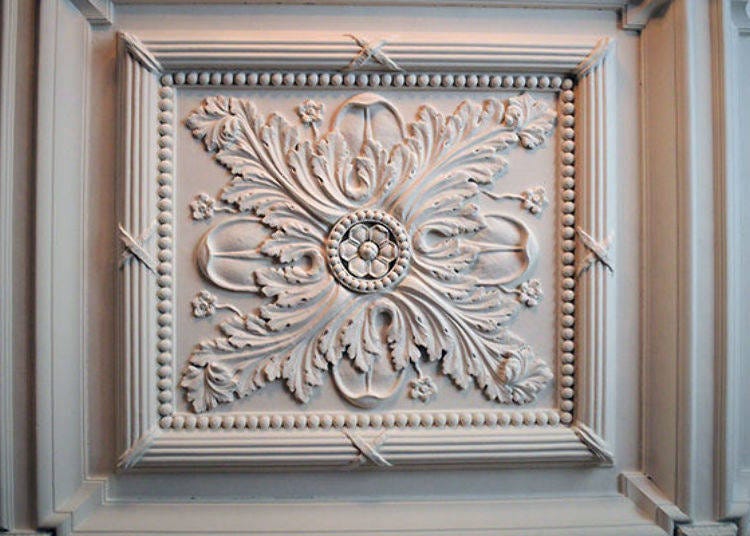
And now let’s turn our attention to the dinner! The full course consists of a number of dishes made with great attention paid to following traditional French culinary techniques in their preparation and to that of the sauces as well. Only organic vegetables grown in the Ohara region of Kyoto and neighboring Shiga Prefecture are used.
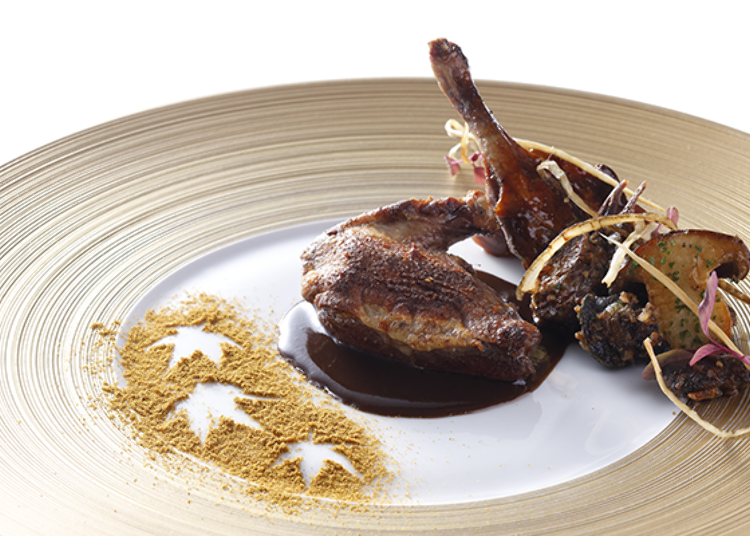
The elegant fragrance and taste of the squab, and the tenderness of the meat, are of the highest Racan quality and exquisitely delicious. Asking the sommelier to recommend a wine to go with the cheese plate will make the moment even more blissful.
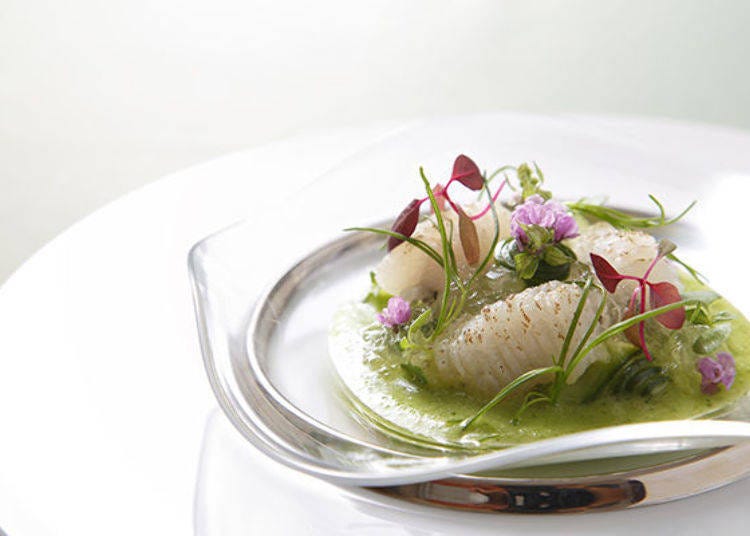
The dagger-tooth pike conger has a pleasant aroma in a sauce made from local cucumbers and the dish is served with a tomato jelly. This is a dish that truly reflects the chilled flavor of Kyoto in summer.

After dinner have a drink in the relaxed atmosphere of the bar. Library Bar Madeira, as its name suggests, was originally a library. The leather sofa and chairs in this softly lit room create the perfect mood for a relaxing after-dinner drink.
The bar stocks more than 100 types of Madeira wine from Portugal, the country that introduced tobacco to Japan, a fitting tribute to Mr. Murai, the Tobacco King of Japan.
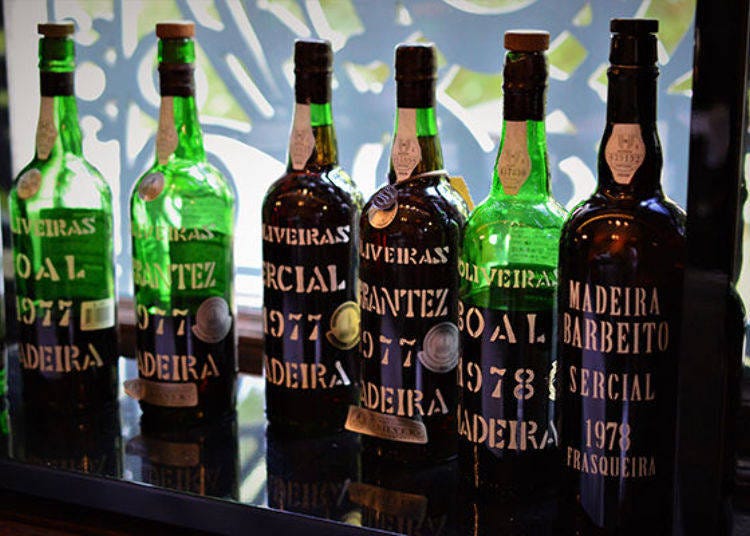
Madeira wine, born in Portugal during the Age of Exploration, is a heated and fortified wine. The wine's flavor and aroma improve with age so it holds up well over long periods of time.
Treat yourself to a glass of vintage Madeira, perhaps one several decades old or one from the year in which you were born. Let your thoughts wander as you slowly savor a glass of this wine.
Chorakukan is near Maruyama Park and Higashiyama Gion. You can feel the four seasons of nature and enjoy the many shrines and temples in this area, the whole of which is like a museum. After your stay in this historical hotel, take time to enjoy the many sights in the area.
-
Hotel Chorakukanホテル長楽館
- Address 604 Maruyama-cho, Higashiiri, Yasaka Torii-mae, Higashiyama-ku, Kyoto City, Kyoto Prefecture
- Phone Number 075-561-0001
Check-in: 3:00 p.m. ~
Check-out: ~ 12:00 p.m.
* Varies according to plans
[Room rates] Panorama View Hollywood Twin Room from 33,000 yen per person per night including two meals (tax and service extra)
* Varies depending on room typeVacancy search, reservation
-
from 85,428JPY 1room, 2adults
Check with our partner site as the latest rates, rate details, and guest room requirements may vary.
- Area
- Category
*Prices and options mentioned are subject to change.
*Unless stated otherwise, all prices include tax.
Popular Tours & Activitiess
Recommended places for you
-

Kambei Sannomiyahonten
Yakiniku
Kobe, Sannomiya, Kitano
-

ISHIDAYA Hanare
Yakiniku
Kobe, Sannomiya, Kitano
-

Jukuseiniku-to Namamottsuarera Nikubaru Italian Nikutaria Sannomiya
Izakaya
Kobe, Sannomiya, Kitano
-
Goods

Yoshida Gennojo-Roho Kyoto Buddhist Altars
Gift Shops
Nijo Castle, Kyoto Imperial Palace
-

Kanzenkoshitsuyakinikutabehodai Gyugyu Paradise Sannomiya
Yakiniku
Kobe, Sannomiya, Kitano
-

Kasuga-taisha Shrine
Shrines
Nara, Ikoma, Tenri
-

November Events in Kansai: Fun Festivals, Food, and Things to Do in Kyoto & Osaka
-

Kyoto's Hidden Treasures Open This Winter! Enjoy Exclusive Access to 15 Rare Cultural Sites (Jan-Mar 2026)
by: Guest Contributor
-
Ad

Recharge and Relax with a Healing Getaway at Kamenoi Hotel Toba
-
Ad

Experiencing Manga as Culture, Not Just Reading It: Expo 2025 with Rumiko Takahashi
-
Ad

Discover Timeless Beauty: Kimono-en, a Web Magazine Exploring the Spirit of Kimono
-

A First Look at NEMU RESORT’s 2026 Grand Renewal in Ise-Shima: A Resort Shaped by Village, Sea, and Forest
by: Guest Contributor
Inspiration for Accommodations
-

Spacious Family Hotel in Namba: 20 Comfortable Stays for Family Fun
-

Charming Hotels to Enjoy the Spectacular Views of Arashiyama's Autumn Leaves from Your Room
-

Experience Stunning Views of Osaka Castle from Private Spaces: Top Hotels Near Osaka Castle
-

Recommended by Visitors! Arashiyama's Best-Rated Hotels
-

Family-Friendly Universal Studios Japan Hotel with Excellent Access
-

Enjoy a Comfortable Stay in Osaka! 10 Hotels with Convenient Airport Shuttle Services
-

Top 10 Recommended Hotels Near Namba Station with Great Access
-

Enjoy Night Views from Your Room! Recommended Hotels in Namba Area
-

Hoshinoya Kyoto: This Incredible Japanese Hotel Welcomes You By Boat on a Sakura-Filled River
-

Unmissable Bargains! 8 Osaka Capsule Hotels in Japan's Food Haven (From $20!)
-

Check In at Osaka's Robot Hotel: Inside the Funky Henn na Hotel Shinsaibashi!
-

5 Popular Things to do in Umeda - Osaka's Central Area!
by: WESTPLAN
-

Why 'OMO' Hotels by Hoshino Resorts Are The Ultimate Urban Getaway in Japan
by: WESTPLAN
-

6 Surprisingly Cheap Things in Japan
- #best gourmet Osaka
- #things to do Osaka
- #what to do in kyoto
- #what to bring to japan
- #best gourmet Kyoto
- #new years in Osaka
- #what to buy in nanba
- #Visiting Osaka
- #onsen tattoo friendly arima
- #daiso
- #Visiting Kyoto
- #best japanese soft drinks
- #japanese fashion culture
- #japanese convenience store snacks
- #japanese nail trends












